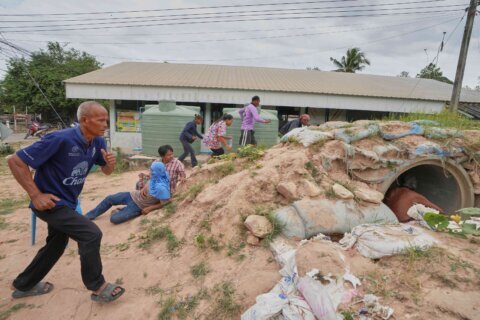Megan Cloherty, wtop.com
WASHINGTON – In a crisis, experts say talking to children about the event is important, but must be done with sensitivity and awareness.
The National Health Information Network’s school crisis guide outlines how to approach children who have been subjected to high profile acts of violence, particularly in schools.
“We don’t know what other people have already been through. What we know from research is that if people have been through a trauma, even three or four years ago, a crisis like this can re-traumatize them,” says Jerry Newberry, executive director of NEA Health Information Network.
Those events “can confuse and frighten children who may feel in danger or worry that their friends or loved ones are at risk. They will look to adults for information and guidance on how to react,” according to the NHIN crisis guide.
Keeping a routine for children is what Newberry says is essential in a situation like this.
“Married to that routine, is for schools to carve out a bit of time to ensure kids’ questions are being answered,” Newberry says.
The following is all sourced from the National Association of School Psychologists:
- Reassure children that they are safe. Emphasize that schools are very safe. Validate their feelings. Explain that all feelings are okay when a tragedy occurs. Let children talk about their feelings, help put them into perspective, and assist them in expressing these feelings appropriately.
- Make time to talk. Let their questions be your guide as to how much information to provide. Be patient. Children and youth do not always talk about their feelings readily. Watch for clues that they may want to talk, such as hovering around while you do the dishes or yard work. Some children prefer writing, playing music, or doing an art project as an outlet. Young children may need concrete activities (such as drawing, looking at picture books, or imaginative play) to help them identify and express their feelings.
- Keep your explanations developmentally appropriate.
- Early elementary school children need brief, simple information that should be balanced with reassurances that their school and homes are safe and that adults are there to protect them. Give simple examples of school safety like reminding children about exterior doors being locked, child monitoring efforts on the playground, and emergency drills practiced during the school day.
- Upper elementary and early middle school children will be more vocal in asking questions about whether they truly are safe and what is being done at their school. They may need assistance separating reality from fantasy. Discuss efforts of school and community leaders to provide safe schools.
- Upper middle school and high school students will have strong and varying opinions about the causes of violence in schools and society. They will share concrete suggestions about how to make school safer and how to prevent tragedies in society. Emphasize the role that students have in maintaining safe schools by following school safety guidelines (e.g. not providing building access to strangers, reporting strangers on campus, reporting threats to the school safety made by students or community members, etc.), communicating any personal safety concerns to school administrators, and accessing support for emotional needs.
- Review safety procedures. This should include procedures and safeguards at school and at home. Help children identify at least one adult at school and in the community to whom they can go if they feel threatened or at risk.
- Observe children’s emotional state. Some children may not express their concerns verbally. Changes in behavior, appetite, and sleep patterns can indicate a child’s level of anxiety or discomfort. In most children, these symptoms will ease with reassurance and time. However, some children may be at risk for more intense reactions. Children who have had a past traumatic experience or personal loss, suffer from depression or other mental illness, or with special needs may be at greater risk for severe reactions than others. Seek the help of mental health professional if you are at all concerned.
- Limit television viewing of these events. Limit television viewing and be aware if the television is on in common areas. Developmentally inappropriate information can cause anxiety or confusion, particularly in young children. Adults also need to be mindful of the content of conversations that they have with each other in front of children, especially teenagers, and limit their exposure to vengeful, hateful, and angry comments that might be misunderstood.
- Maintain a normal routine. Keeping to a regular schedule can be reassuring and promote physical health. Ensure that children get plenty of sleep, regular meals, and exercise. Encourage them to keep up with their schoolwork and extracurricular activities but don’t push them if they seem overwhelmed.
Suggested points to emphasize when talking to children:
- Schools are safe places. Educators work with parents and public safety providers (local police and fire departments, emergency responders, hospitals, etc.) to keep you safe.
- The school building is safe because






